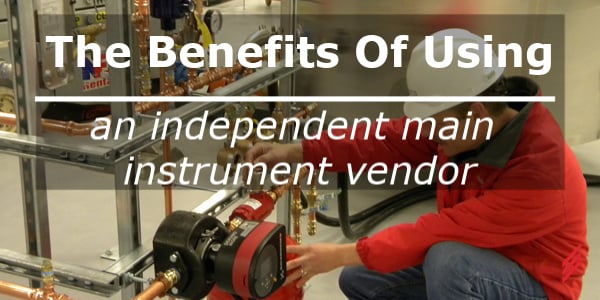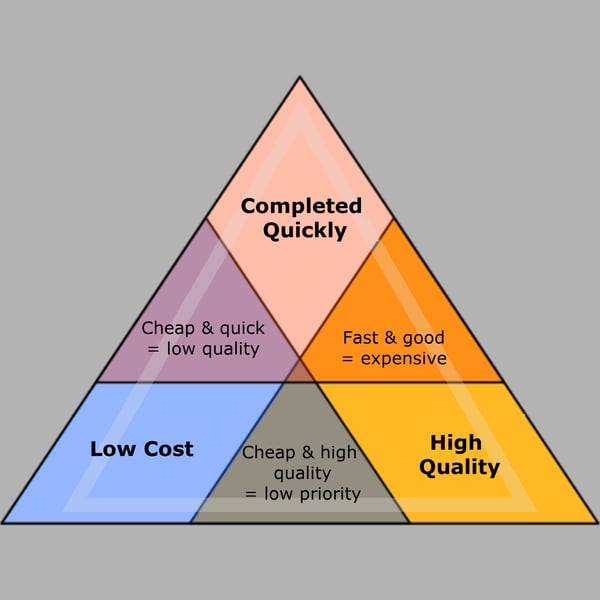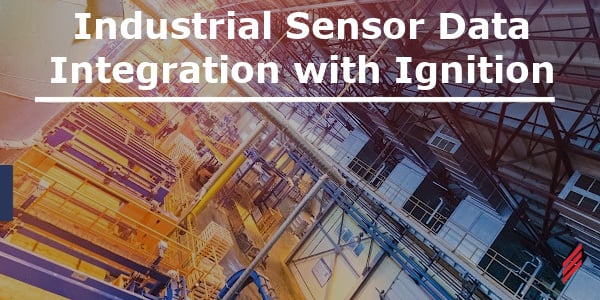The Benefits of Using an Independent Main Instrument Vendor
by Keith Flaherty on May 18, 2023 10:17:09 AM

I was recently speaking with the Capital Project Manager for an upcoming expansion at their pharmaceutical manufacturing campus. I asked if they were going to hire a Main Instrument Vendor for the project. “That’s a good point. We haven’t even thought about how we’ll manage the instrumentation on this project.”
Additional blogs in the this series:
How To Choose The Best Main Instrument Vendor For Your Project
The 4 Steps of an Instrumentation Project Plan
In this case, and in many others, instrumentation is often an afterthought. That is truly shocking when you consider that these devices are critical elements to a plant’s control system functioning properly.
We’ve been involved in many large capital projects through the years and we’ve seen many different approaches to the specification, purchase, installation, calibration and turnover of valves and instrumentation:
- Include instrumentation in the scope of the Main Automation Contractor (MAC). This may make sense, depending upon the skill set and experience of the MAC. Often, this team is better suited to the programming and configuration of the automation system.
- Have the Electrical Contractor own the instrumentation. Again, this might work. But, more often than not, instrumentation is not a core area of expertise for the electrical contractor.
- In an attempt to save costs by eliminating “mark-up,” the engineer (or construction manager) purchases the instruments and turns them over for installation by electrical and mechanical subcontractors.
- Hire an instrument manufacturer as the Main Instrument Vendor (MIV). In this case, the MIV is responsible for all instrumentation activities and will attempt to utilize as many of their own products (whether best for the situation or not) to complete the project. They will likely also try to sign on for an “asset management program” or long-term service contract.
- Or, an Independent Main Instrument Vendor is selected. In this case, the owner (and/or construction manager) recognizes that instrumentation is a specialty trade and values the expertise and autonomy brought to the project by an MIV who can support the engineering firm to specify the best devices for the application.
Of the approaches described above, we have seen the most benefits to the owner when choosing an independent MIV. I’ll classify these benefits based upon the well-known Project Management triangle of Schedule, Quality and Cost that states you can only choose two on any particular project.
 Figure 1 Project Management Triangle
Figure 1 Project Management Triangle
Schedule
Most projects we become engaged with have an “aggressive” schedule. Hiring an MIV early in the process (during design) to assist the engineer with the development of ISA Data Sheets for instrumentation and valves will provide schedule benefit during the project in two ways:
- Reduce the Submittal Approval Process. Being integrated with the engineer of record during design has allowed us to utilize a “Submit for Record” process, bypassing the time required for approval prior to procuring the instrumentation.
- Reduce Errors. Making a mistake (not an uncommon occurrence given the number of digits in a part number!) on an instrument or valve with a 12-week lead time can create major problems during installation and start-up. Retaining an experienced vendor focused specifically on the instrumentation process, delivery and documentation requirements can mitigate the risk of errors.
Quality
In a regulated industry, “quality” is not negotiable (nor should it be in any industry). In a Life Science project, an experienced MIV will complete all their work with validation in mind. The MIV will involve the owner’s Quality, Engineering and Qualification team at the onset of the project to:
- Define the Turnover Package. Upfront understanding of the expectations for the equipment turnover package (ETOP) will allow all requirements for the ETOP to be designed into the process.
- Agree on Standard Operating Procedures (SOPs). We typically request SOPs from the client for bench testing and calibrations for us to follow during the project. If the client does not have any, we submit ours for approval.
Cost
This is where some conflict can occur. Although not always spoken in these words, the message is often “good, fast and cheap!” That said, we’ve seen too many times that the low bid is accepted only to run into problems that could be avoided, including ordering wrong parts, installing them incorrectly, or having to rework all of the documentation to support validation. While there is a cost to doing the work correctly, there is often a larger cost to doing it incorrectly. An Independent Vendor (not a specific manufacturer) can leverage partnerships with multiple suppliers to provide the most cost effective and/or quickest lead-time instruments.
In future blogs, I will share detailed information on the MIV Process, including:
- How to select an MIV
- The 4 Steps of an MIV Project Plan
- The MIV Process:
- Design assistance
- Procurement, inspection and bench test
- Installation, calibration and ETOP
- Management Tracking System and sample forms
In the meantime, if you have any questions regarding our MIV services, please feel free to call us here at Hallam-ICS.
About the Author
Keith is a graduate of the University of Vermont with a BSEE and an MBA. He has been with Hallam-ICS since 1988 as an electrical engineer, manager of integration services, CFO, and CEO. He focuses the company on understanding and meeting the needs of each individual client while at the same time delivering the highest possible level of technical expertise.
Read My Hallam Story
About Hallam-ICS
Hallam-ICS is an engineering and automation company that designs MEP systems for facilities and plants, engineers control and automation solutions, and ensures safety and regulatory compliance through arc flash studies, commissioning, and validation. Our offices are located in Massachusetts, Connecticut, New York, Vermont, North Carolina, Texas and Florida and our projects take us world-wide.
You May Also Like
These Related Stories

Should I Vent My Ignitable Liquid Storage Cabinet?

Hitting the Trail (It Isn't What You Think)



Comments (1)